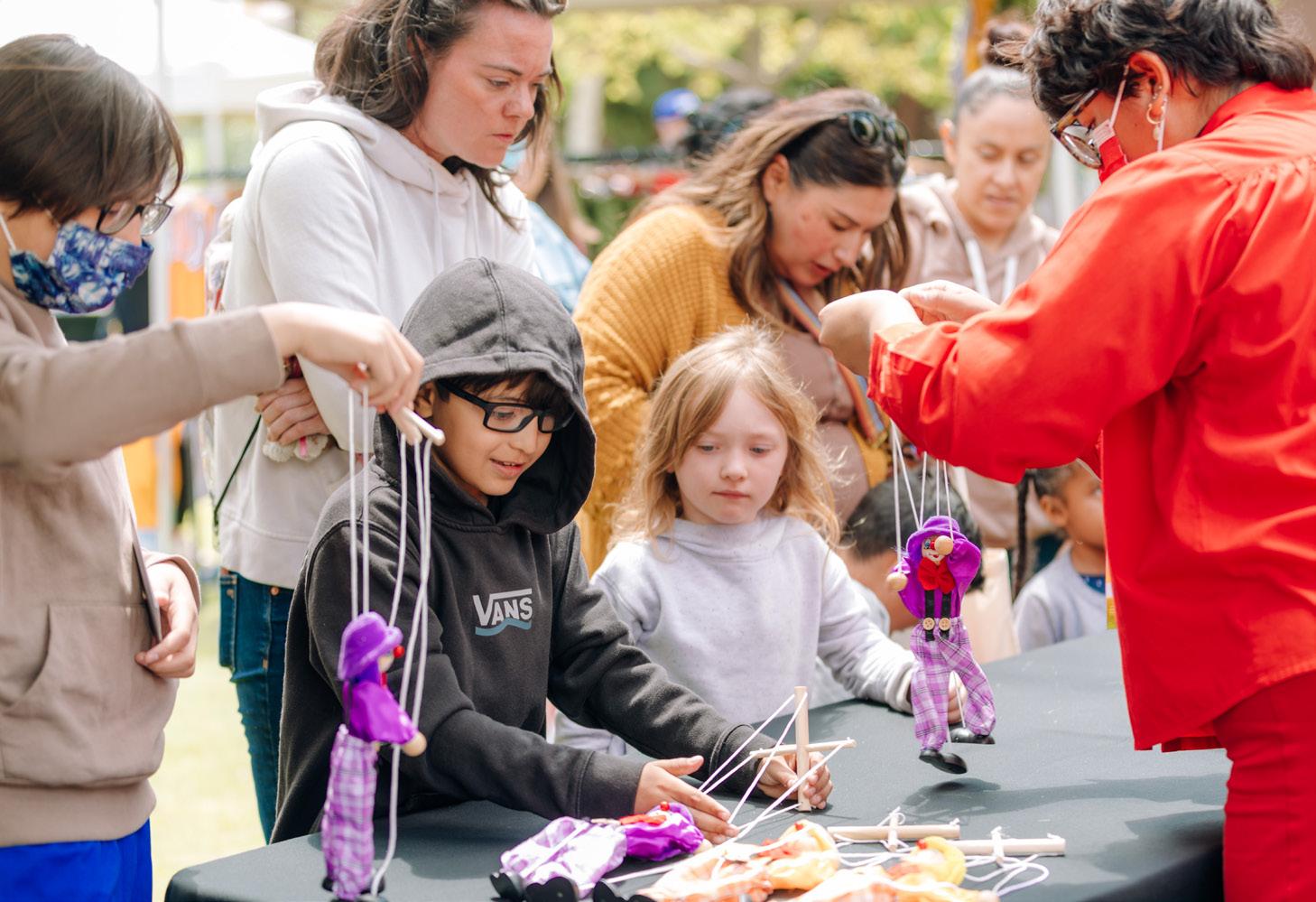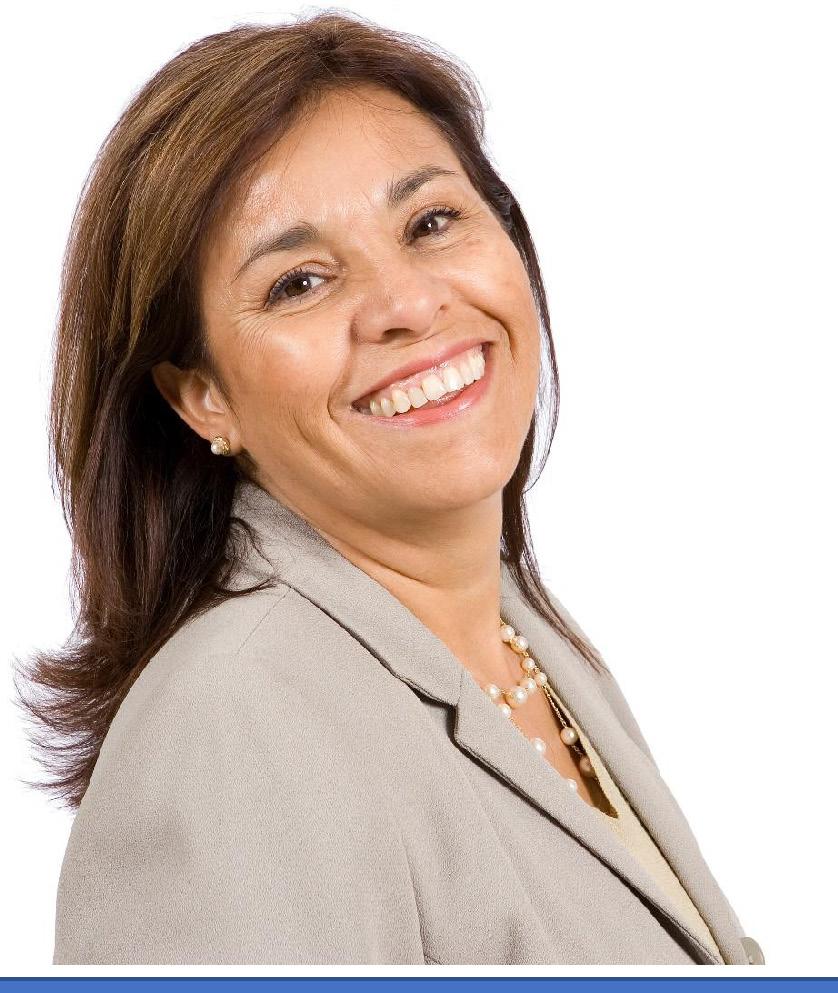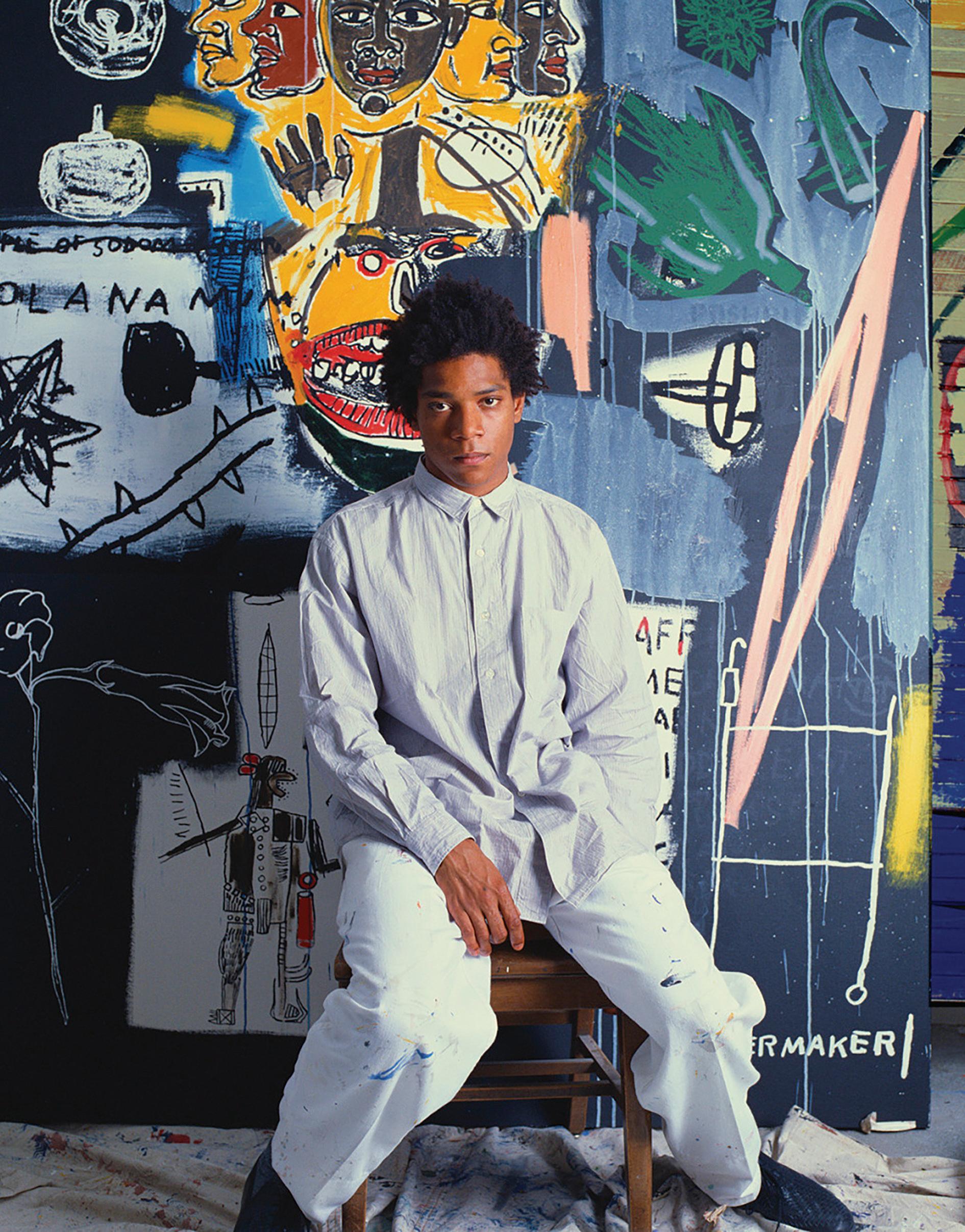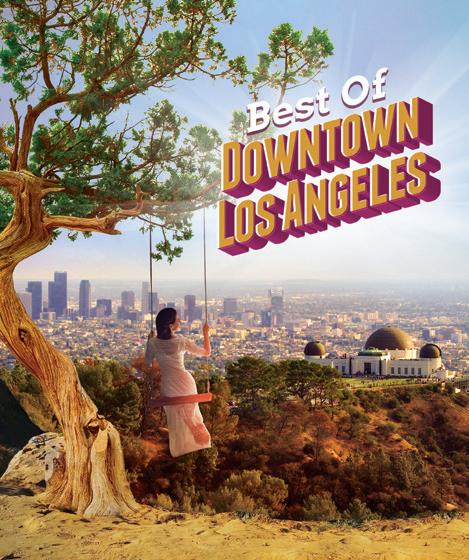Culinary Excellence

Public Transit Discourse
LA Metro hosts town hall
+ Ridley-Thomas found guilty of bribery and fraud


LA Metro hosts town hall
+ Ridley-Thomas found guilty of bribery and fraud
LA Metro hosted a telephone town hall on March 28 to hear from residents about how future funds might be allocated. Many riders who called in expressed concerns regarding safety, cleanliness, reliability and accessibility.
“We must ensure that we are spending money in places where it creates the greatest value,” said Los Angeles County Supervisor Kathryn Barger. “This is where you come in; we want to understand your priorities and needs regarding the Metro system. That’s why we are all here tonight.”
In the past 12 months, LA Metro has worked to restore its transit service to pre-pandemic levels, hiring almost 1,000 new transit operators to provide frequent and reliable service and deploying hundreds of new personnel, including Metro ambassadors, custodians, maintenance workers, transit security officers and homeless outreach workers.
In December 2022, LA Metro restored its bus service levels with higher frequency for over 50 Metro bus lines. The Metro plans to roll out additional bus lanes on corridors such as Roscoe and Sepulveda Boulevards in the San Fernando Valley.
The new regional connector, a 1.9-mile light rail line, will soon open in Downtown with three new stations at Little Tokyo/Arts District, Historic Broadway and Grand AvArts/Bunker Hill. The connector will allow light rail riders to travel through Downtown without changing trains. For instance, this will allow riders to travel from Pasadena to Long Beach or East LA to Santa Monica without changing trains.
In the next fiscal year, LA Metro plans to increase peak and off-peak train frequencies, restoring a 10-minute peak service on the subway lines, an 8-minute frequency on light rail lines, and an off-peak frequency of 10 minutes for all rail lines, replacing the current 12 to 15 minutes off-peak frequency.
Still, like the rest of the county, LA Metro is grappling with broader societal issues such as homelessness, the opioid crisis and mental health. These were issues brought up repeatedly during the town hall by concerned riders.
Additionally, the C Line along the I-105 will connect with the new Krenshaw K Line and will be linked near LA Metro’s new LAX area rail station, where the Metro rail network will connect with the new LAX automated people mover. The new LAX transit

center will open at the end of 2024.
Since the pandemic, LA Metro has taken extreme measures to ensure clean facilities. Cleaning crews pressure wash the floors and stairs two to three times a week. All stations are cleaned twice daily, and 13 select hotspot stations are cleaned around the clock; crews remove trash and debris, sweep floors, mop elevators, spray odor-eliminating products and wipe down and disinfect benches and surfaces. In addition to stations, trains and buses are cleaned and disinfected daily. LA Metro has begun installing stainless steel surfaces on the subway cars and vinyl seats in all trains and buses for effective cleaning.
One caller expressed concern over the frequency of the significant local lines in the San Fernando Valley, citing that trains “approximately run once an hour.” The caller asked Metro officials to consider allocating taxes toward increasing the frequency of the major lines in the SFV.
Metro officials responded that the usage level on each route determines the frequency of Metro lines but would consider the issue when dispensing the new budget.
Another rider called asking about plans to extend the K Line to SoFi Stadium in Inglewood.
Officials relayed that there are bus routes that link the Inglewood K Line station to the stadium. The city of Inglewood is in the early stages of planning to connect the K line to the stadium, intending to have the project completed by the 2028 Olympics.
A few residents mentioned safety concerns, citing drug use on the Metro as a major factor.
“Although most riders use Metro every day without incident, we know that there are fears and concerns that we need to address. Our region is suffering from an opioid addiction crisis,” said Gina Osborn, LA Met-
ro’s chief safety officer. “Nevertheless, there should be no open use of illegal drugs on the system, and there should be absolutely no tolerance for assault on riders and our operators or any other crimes on our system.”
In February, LA Metro began an enforcement campaign to reduce illegal drug use on public transit, and law enforcement has since made 205 drug-related arrests. Since the start of the campaign, reported incidents of drug-related activity have declined by 87%. The Metro board recently approved funding for 48 additional transit security officers.
Addressing the homeless crisis within LA County and the Metro system, LA Metro’s Deputy Chief of Staff Elba Higueros said, “The homelessness crisis continues to challenge the Los Angeles region, and Metro is not immune to the effects. As ridership fell during the pandemic, there was a noticeable increase in people experiencing homelessness seeking shelter on the Metro system. … We’ve heard from our customers through various channels, surveys, social media comments, call centers and community meetings that homelessness is a top priority area to improve their experience aboard Metro.”
The proposed solution is to invest heavily to provide resources to unhoused people seeking refuge on public transit. Metro aims to partner with the county to bring homeless outreach and multi-disciplinary teams onto the transit system. The homeless services providers will work seven days a week and direct those experiencing homelessness to resources and housing like the Homeless Management Information System, county services, hygiene kits, meals, clothing, medical treatments, addiction support, mental health evaluations, sobering centers and crisis beds.
“We know that change will not happen overnight. We know that every single person who chooses Metro should have a dignified experience when on their trip,” Higueros said. “This is not a problem that we are equipped to solve on our own, and the ongoing regional collaboration to bring solutions will be the only way that we can swiftly respond within the framework of our reimagined public safety vision. We ensure that we are compassionate to those experiencing homelessness who are subjected to trauma daily. We’re also deploying strategies that focus on making the transit system a safer place to travel.”

SINCE

facebook: L.A. Downtown News

twitter: DowntownNews

instagram: @ladowntownnews

PRESIDENT:
VICE PRESIDENT:
Mark Ridley-Thomas was found guilty of obtaining substantial benefits at the University of Southern California for his son in exchange for political support and lucrative county contracts during his time representing District 2 on the LA County Board of Supervisors.
The jury found Ridley-Thomas, 68, guilty of seven felonies, including one count of conspiracy, one count of bribery, one count of mail fraud and four counts of honest services wire fraud.
“When elected leaders engage in acts of corruption, our community suffers immense damage. Ridley-Thomas engaged in a corrupt conspiracy with a university dean to steer taxpayer-funded contracts to the school in exchange for benefits for his son,” said U.S. Attorney Martin Estrada. “Today’s verdict sends a clear
message to public officials that my office will vigorously investigate and prosecute those who abuse their power and thereby breach the public trust.”
According to the evidence presented at his 16-day trial in 2017/2018, Ridley-Thomas conspired with Marilyn Louise Flynn, a formerly tenured professor and the dean of USC’s School of Social Work.
Throughout the conspiracy, Flynn guaranteed Ridley-Thomas’ son admission to a dual master’s degree, a full-tuition scholarship and a paid professorship. Flynn also arranged for Ridley-Thomas to funnel $100,000 of his campaign funds through the university to a nonprofit operated by Ridley-Thomas’ son.
In exchange for these services, Ridley-Thomas supported contracts involving the social work school, of which Flynn was the dean. These contracts included services to the LA County Department of
Children and Family Services, the Probation Department and the amendment to a contract with the Department of Mental Health that could yield the university millions of dollars in revenue.
The university alleges it was unaware of the origin of the $100,000 payment, as Flynn attempted to disguise the money’s source to make it appear the school was the benefactor for Ridley-Thomas’ son.
The FBI, who investigated this case, determined Flynn’s motivation for accepting the corrupt services was the deteriorating financial state of the social work school; it faced a multimillion-dollar budget deficit. Ridley-Thomas was aware that she sought to influence other county decision makers.
Flynn pleaded guilty to one count of bribery in September 2022. She will be sentenced on June 26, and faces a maximum sentence of 10 years in federal prison. Prosecutors have agreed to satisfy
this with home confinement and will be seeking a fine of no more than $150,000.
Ridley-Thomas’ sentencing is scheduled for Monday, Aug. 14, at which time the maximum sentences for his five years for conspiracy, 10 years for bribery, and 20 years for each of his four counts of honest services fraud.
City Councilmember Grace Yoo, who serves Council District 10, released a statement on March 30 regarding Ridley-Thomas’ conviction.
“With today’s guilty verdict, we now have three LA city councilmembers who have pleaded guilty, or been convicted, of corruption charges within the past three years,” she said. “Angelenos deserve a city government free of corruption and focused on the needs of the residents and business owners. We need elected leaders who look out for the interest of the people, and not their own self-interest.”
Your journey to motherhood is a precious time. California Hospital Medical Center’s team of maternity doctors, nurses, and specialists help guide you every baby step of the way. And, we offer a host of tools to help you prepare for the big day—from classes and a virtual tour of our facility, to our My Baby pregnancy app that allows you to track your baby’s development, growth, and more. Learn more at dignityhealth.org/chmc/baby.














Iwas raised in South Dakota. The only Jewish person I was familiar with was Anne Frank … and, of course, Jesus. The third Jewish person I knew, I married. His family was mortified and had to muster every “good sport” molecule they had to accept his choice of me as his fiancée: a shiksa, a non-Jewish woman. Oy vey!
My ultra-Norwegian-American Lutheran grandmother morphed her own religious bigotry into bittersweet acceptance. Grandma walked up to my handsome new groom at our wedding reception. She peered up at him and yelled as only slightly deaf people could bellow: “Your people killed my savior … but you seem like a nice boy!” Uff da! (“Uff da” is Norwegian for “oy vey.”)
Before our wedding, I offered to convert to Judaism because, frankly, from what I could see, the world needed more Jews.
 Ellen Snortland
Ellen Snortland
Who doesn’t like witty, frugal shoppers and conversationalists who throw in ohso-handy Yiddish expressions? I figured I could add to the numbers.

My new husband, petrified at the idea of me becoming Jewish, envisioned my conversion and gently talked me out of it. He was clearly familiar with my meshuga approach to life — slightly nuts, but with zeal!
He realized if I converted, I would next become a Rabbi, remodel the kitchen to accommodate kosher requirements, and he’d spend his adult life like his childhood: going to temple all the time and wearing things on his head. (My new hubby was a bareheaded-type guy.)
Imagine his chagrin when I announced, “I’m creating a Seder!” I loved the idea of Seder, the ritual held at Passover commemorating the Jews’ exodus from Egypt at the hands of pharaoh. Of course, we all have pharaohs we need deliverance from, whether that pharaoh literally enslaves a whole race or is the newly elected official who wants to prevent you from getting birth control or telling you what books you can and can’t read. Seder is a beloved tradi-
tion for everyone, Jew and shiksa alike.
A theater producer at the time, I roped in every theater friend I could find and created a Seder production team — not all shiksas; some of us actually knew what we were doing. We also decided our Seder would be a feminist one, and we would include — hold on to your yarmulkes — women!
Being an ardent women’s rights advocate, I was taken aback by some of the customs my husband had grown up with. His mom had dairy dishes, meat dishes, Passover dairy dishes and Passover meat dishes. I’m thinking, “Geez, women did not make up these rules.” Then, the patriarchs had the audacity to create ritual texts for the Seder (called a Haggadah) and not have one mention of women in the flight from Egypt? Really? Come on! Let my people go, except we’ll keep our women serving us like slaves. You let us go!
Oh sure, we were supposed to gath -

er manna, milk the goats, clean the tents, bake the unleavened bread — quickly! — keep the kids quiet, separate the meat and dairy dishes and the separate set of Passover dishes, prepare the table and cook the special Passover meal while smiling at relatives we don’t really like … but then, to not even have a nod to our own unique form of oppression while we wait on you patriarchs? Not at our table!
This goyishe momma wasn’t having any of the same ol,’ same ol’ regarding an ancient religion celebrating liberation. I also have the same disdain for the Christian holiday of Christmas, where the women do all the food shopping and prepping, wrapping gifts, and decorating while Santa gets all the credit.
My first shiksa Passover finally came to pass, excuse the expression, and was a sitdown Seder for 60 people. As custom dictates, we set a place for the wandering prophet Elijah if he decides to return. As it turns out, Elijah probably did more to wipe out the matriarchal goddess cultures than any other prophets did, but that’s another column. In any event, we also set a place for Miriam in case she wanted to drop by.
After all, if it hadn’t been for Miriam and that ancient shiksa princess Bisyah, pharaoh’s daughter, Moses would have had a very different fate than leading the Jews — females and males — out of Egypt. There have always been women and girls throughout history, making everyone’s his-
tory possible.
This year, during my shiksa Seder, each guest will reflect on the following:
1. The current oppression in their lives: “I feel enslaved by the addiction to please everyone all the time,” or “I think I have a drinking problem,” or “I have a compulsion to customize holidays to my liking”
2. Actions they could take in the coming year to cut those self-designed ropes of said enslavement
3. Five things they are grateful for.
Sadly, my marriage to my first husband ended, but I’ll always be grateful to him for being a mensch and opening the door to a rich heritage I continue to celebrate.
Happy Pesach, everyone!
*Yes, we celebrated Easter and Passover last week. However, I’ve chosen to make this particular column an annual tradition, as it’s the most requested column I’ve written in a long time.
2023 marks the 30th year that Ellen Snortland has written this column. She also teaches creative writing online and can be reached at: ellen@beautybitesbeast.com. Her award-winning film “Beauty Bites Beast” is available for download or streaming at https://vimeo.com/ondemand/beautybitesbeast.



COME, VISIT US!
Jointly Maintained CHRISTIAN SCIENCE
READING ROOM
COME, VISIT US!
COME, VISIT US!
...


… DISCOVER A QUIET SAFE HAVEN FOR PRAYER THE BIBLE LESSON HEALING INSPIRATION
LOS ANGELES
… DISCOVER A QUIET SAFE HAVEN FOR PRAYER
THE BIBLE LESSON HEALING INSPIRATION
“Whatever guides thought SPIRITUALLY benefits mind and body.”
Amid the blooming cherry blossoms, parkgoers are invited to bask in the early morning light during Grand Park’s Easy Mornings. Coming into its third year, Easy Mornings will return this month with performances, activities and workshops, delving into the creative roots of LA
cluding live DJ sets with DJ Moni Vargas of Friends We Love, family drum circles with Freedom Drum Circle, puppetry hosted by LA Guild of Puppetry and Bob Baker Marionette Theater, storytelling with Con Todo Press and Pickle from Drag Queen Story Time.

- MARY BAKER EDDY
“Whatever guides thought SPIRITUALLY benefits mind and body.”
-Mary Baker eddy
“Whatever guides thought benefits mind and body.”
Westin Bonaventure Hotel
- MARY BAKER EDDYWestin Bonaventure Hotel
Suite #602A – 6th Floor near YMCA Br 404 S. Figueroa Street, Los Angeles, CA 213-928-0920
Suite #602A – 6th Floor near YMCA Bridge
Reading Room Hours
The free, four-hour program will be held from 10 a.m. to 2 p.m. Saturdays, April 15 and April 22, at the newly renamed Gloria Molina Grand Park, nestled among some of Downtown’s most prominent institutions like Disney Hall, The Music Center, The Broad and Museum of Contemporary Art, Los Angeles.
The event is produced along with Streetlet, a company that brings together LA-based small businesses and nonprofits to showcase their work and will include a mini maker’s market. Throughout the two weekends, there will be over 30 vendors.
Monday – Friday: 10:00 a.m. - 4:00
404 S. Figueroa Street, Los Angeles, CA 213-928-0920
Reading Room Hours
Monday – Friday: 10:00 a.m. - 4:00 p.m.
p.m.




































Performances held at the main stage will feature all-ages programming, in -
Pop-ups and booths will include the Chinese American Museum, Con Todo Press, LA County Library, LA Guild of Puppetry, Sunbeams, The Tree Yoga Coop and Muddy Heaven.
Many booths will feature hands-on ac -














tivities throughout the day.
There will also be ample opportunity to explore the park’s beauty with child-inspired nature walks.
The event was born out of “a deep need and desire for our community to have a free space to enjoy,” said Dawn Robinson-Patrick, the senior manager of programs for Gloria Molina Grand Park. “We have worked to create a little bit of something for everybody to experience.”
Patrons are encouraged to bring blankets and lawn chairs to lounge on the grass and enjoy performances and picnic. There will be food trucks and food and beverage vendors for lunchtime
fare.
While much of Grand Park’s programming is aimed at adult audiences, Easy Mornings was geared to include all ages, allowing families and adults to enjoy the park’s extensive programming.
“We’re super excited to create an opportunity for families to come down to the park on an early Saturday morning,” Robinson-Patrick said. “We saw this incredible interest for people to come and enjoy the park on the weekend and in the morning. We thought it was also an excellent opportunity to support and create connections for families with young children.”

Grand Park’s Easy Mornings
WHEN: 10 a.m. to 2 p.m. Saturdays, April 15 and April 22
WHERE: Grand Park, 200 N. Grand Avenue, Los Angeles
COST: Free admission
INFO: grandparkla.org
 By Christina Fuoco-Karasinski
LA Downtown News Executive Editor
By Christina Fuoco-Karasinski
LA Downtown News Executive Editor
Agroup of “old punk rockers” are paying it forward with The Great LA Musical Instrument Donation Drive, featuring a show and silent auction.
The all-ages show is 3 p.m. Saturday, April 15, and features the reunion of Popdefect, 3-D Picnic and Quazar & the Bamboozled. For those 21 and older, there’s an 8 p.m. show with Geza X, Kira Roessler, Gitane Demone, Carnage Asada and Bronson Caves. Both take place at the Redwood Bar & Grill, 316 E. Second Street, Los Angeles. Tickets are available on eventbrite. com. The event also includes a music marketplace with records, CDs and other memorabilia from the 1990s Silverlake scene associated with the alt-rock club, Spaceland.
“We are having a fundraising concert as well as an instrument donation drive, encouraging people to donate new or slightly used instruments that they don’t use anymore — only if they’re suitable to pass on to a student who want to learn music and get involved in it,” said Bob Lee, drummer for the evening headliners Bronson Caves.
“It feels like a natural fit for a group of LA artists to try and support it.”
Event organizers are working with the charity Education Through Music Los Angeles. It has a seven-part mission:
• Providing music as a core subject for every student at partner schools
• Configuring and supplying new music classrooms
• Recruiting and hiring top-notch music teachers
• Offering a sequential curriculum meeting state and national standards
• Mentoring and professional development for teaching professionals
• Developing band and orchestra ensembles
• Evaluating the program to maintain the highest quality standards.
Lee, who moved to Los Angeles in 1988 from New Jersey, has a storied musical background, as he performs with Mike Watt’s solo projects; and was in Claw Hammer in the 1990s. They were signed to Epitaph and later Interscope.
He started playing drums in the fourth grade and continues to do so and sing.
“I don’t play as often as I used to, but when I have the chance to do something,

it feels nice to make it a special event and do something worthwhile with the proceeds,” Lee said.
“I was inspired last year when I saw a picture of Joey (Keithley) from DOA having an instrument donation drive. I thought we could do that in LA. We have a need for getting youth involved in music and music education.”
For the show, Geza X will make a rare solo appearance, backed by Bronson Caves, which, along with Lee, features Dez Cadena (Misfits, Black Flag), Paul Roessler (The Screamers, Mike Watt and the Secondmen), Jonathan Hall and Heath Seifert.
It is Bronson Caves’ first show.
“Geza X made some well-known punk records around 1980 as well as having produced some of the early classic punk records like those by the Dead Kennedys,” Lee said. “This is his first solo appearance in quite a number of years.
“Basically, we’re a bunch of old punk rockers coming back together to pay it forward to the youth. That’s a good theme.”
The Great LA Musical Instrument Donation Drive and Concert
WHEN: 3 p.m. and 8 p.m. Saturday, April 15
WHERE: Redwood Bar & Grill, 316 E. Second Street, Los Angeles
COST: General admission tickets are $15 for each show
INFO: eventbrite.com


 By Christina Fuoco-Karasinski LA Downtown News Executive Editor
By Christina Fuoco-Karasinski LA Downtown News Executive Editor
Fitz and the Tantrums co-lead singer Noelle Scaggs will be honored as part of the She Rocks Awards — and she says she’s in good company.
Among her fellow honorees are Judy Collins, English singer-songwriter/YouTube personality Mary Spender and Shelly Peiken, who co-wrote the No. 1 hits, “What a Girl Wants” and “Come on Over Baby” by Christina Aguilera.
Peiken also penned songs for Meredith Brooks, Britney Spears, The Pretenders, Natasha Bedingfield, Keith Urban, Celine Dion, Cher, Reba McEntire, Jessie J, Miley Cyrus, Ed Sheeran, Aaliyah, Selena Gomez, Idina Menzel and Demi Lovato.
Scaggs, who lives near DTLA, said she’s excited about the honor.
“It’s pretty amazing to just be recognized among all of my peers, all of the other women who are being recognized as well,” she said. “To continuously see the upliftment of women in this industry, across the board, especially as creatives, is great.”
The She Rocks Awards is scheduled for 6:30 p.m. Thursday, April 13, at The Ranch in Anaheim, as part of the annual NAMM Show, hosted by the National Association of Music Merchants.
The She Rocks Awards and The Women’s International Music Network were founded by music industry veteran Laura B. Whitmore in 2012.
The Women’s International Music Network brings together women from all facets of the music industry. The organization produces events, creates opportunities for performances and networking and works to bring the conversation around diversity in the industry into the forefront.
This year marks the 11th anniversary for the She Rocks Awards, which is hosted by Lisa Foxx and Aijia Grammer. The latter is the wife of Andy Grammer and an entertainer.
The organization is celebrating Scaggs for her nonprofit Diversify the Stage, a network of industry professionals and community engagement organizations collectively working to build a culture of accountability to establish more inclusive hiring practices and greater access to equitable opportunities in live music, events and touring industries.
Diversify the Stage is works to build a
culture of accountability that establishes more inclusive hiring practices and greater access to equitable opportunities for Black, Indigenous and people of color (BIPOC); lesbian, gay, bisexual, transgender and queer; and female-identifying and gender nonconforming individuals.
Diversify the Stage has gained support from Live Nation, Live Nation Urban, WME, UTA Music, Azoff Company, Elektra and Atlantic Records, The Black Music Action Coalition (BMAC), and the National Independent Venue Association (NIVA), The Event Safety Alliance, Roadies of Color United and lighting collective EVEN Network.
“I started to focus on the lack of diversity in the behind-the-scenes careers — think tour personnel, production, stagehands, technical career paths, promotions and marketing, the companies that are booking talent and presenting concert events,” she said.
“We really want them to understand the obstacles or to really reanalyze how things happen in that space when they’re looking at hiring people. Word of mouth has worked for the music industry as a whole.”
At the end of 2022, Diversify the Stage established itself as a 501(c)(3) nonprofit.
“It really gives us the ability to fundraise and run the organization the way that we want to without the need of an additional partner to help us navigate fundraising opportunities,” Scaggs said.
“It’s a wonderful growth opportunity
for the organization. We can get more involved in state-funded growth opportunities.”
Diversify the Stage is going into its third year of giving youth an opportunity to enter the music industry. Recently, it closed its application process for the Diversify the Stage apprentice program for 2023.
“I’m really excited about the number of young women from all different walks of life who have been applying for this program,” she said.
“They’re finding out about it from schools, from different nonprofit organizations that they follow. They’re learning about it from staff members at major companies. It’s this really cool word of mouth that’s allowing us to reach more people.”
Born in Colorado, Scaggs grew up in South Pasadena, graduating from South Pasadena High School. She attributed her success to being in the “right situation and with the right community of artists at the time.”
She admitted she was unsure if she should pursue artistry or support other creators to build and develop their own businesses.
“I was in a different space,” she said. “The LA community is so different than it is now. There are so many pockets of inspiration and support that I could pull from back then. I got into an internship to look at the corporate side of things, first with

Atlantic in the publicity department.”
Known for the songs “HandClap,” “Out of My League” and “The Walker,” Fitz and the Tantrums is headed out on the road with
Goo Goo Dolls.
“We’re looking forward to touring,” she said. “On the last tour, in the winter, we had a good time with our crowd.”
The 11th Annual She Rocks Awards
WHEN: 6:30 p.m. Thursday, April 13
WHERE: The Ranch, 1025 E. Ball Road, Anaheim
COST: Tickets start at $75
INFO: sherocksawards.com


 By Luke Netzley
LA Downtown News Deputy Editor
By Luke Netzley
LA Downtown News Deputy Editor
Through his renowned comic dynasty Marvel, Stan Lee created a series of characters and stories that have heavily influenced the way audiences see heroes today. Despite his success and lasting legacy, there was a moment in Lee’s career when his company was on the edge of bankruptcy and the Comics Code Authority, the regulatory arm of the Comics Magazine Association of America, had refused him permission to publish.
It’s a story that a collective of Los Angeles actors, musicians and writers are determined to tell in their new production, “The Comics Code.” They recently released a sizzle reel filmed in Downtown LA and will hold a free reading with live music on Sunday, April 23, at Plummer Park.
The group, led by writer Fletcher Crossman, formed during the pandemic,
when Crossman spent much of his days in his West Hollywood apartment and began to meet his neighbors.
“I’d heard other people singing and so on, so I knew we had some singers in the area,” he described. “One of the guys who lived just across from my apartment, a guy called Rob Warner, I’d heard him singing and so we chatted, and I said, ‘I’m working on a musical,’ and he said, ‘Oh, I do musicals.’ So, then he helped me record a couple of the songs and then another singer called Julia Masterson, who lives just nearby, … she said, ‘Yeah, I’m an actress.’
“It became a kind of communal process because we were all at home all the time. Everybody was just living in their apartments, … but getting to know each other.”
Crossman had been experimenting with ideas for a musical and was fascinated by the story of Lee’s early career. The two ideas came together and in -
spired him to begin writing “The Comics Code.”
The production’s storyline begins at a time when the comic industry was in collapse. It was the early 1960s, and a desperate Stan Lee decided that creating more relatable, humanlike heroes could strike a chord with audiences. His characters wouldn’t fit the superman mold, but would argue and bicker with each other while battling with their own flaws. In 1961, the “Fantastic Four” series was born.
“That was almost their kind of swan song; it was going to be the last thing they produced,” Crossman explained. “It took off and became incredibly successful. And then Stan Lee started coming up with character after character, Spider-Man and Iron Man, who were all in the same vein.
“It became a much more dynamic, new kind of comic so that all the other comic companies now started following
what Marvel was doing. … They were like The Beatles of the comics industry. It was a whole new sound, a whole new way of looking at that art form.”
In the late 1960s to early 1970s, New York City was facing a heroin epidemic. It was an issue that Lee wanted to address in his comics so that he could warn his readers about the drug’s dangers, infusing drug abuse into the Spider-Man story arc.
At the time, the Comics Code Authority stated that the depiction of drugs went against their rules, so Lee decided to publish the comic’s issues without the code’s permission or seal of approval, which was once prominently displayed on covers throughout the country.
“It was the first comic that was published without the Comics Code stamp on the front,” Crossman said. “The reaction was overwhelmingly positive. All the newspapers … were all saying, ‘This

is actually becoming a serious art form. They’re actually using their voice for important things.’ And at that point, the Comics Code Authority had to kind of back off.
“Stan Lee, who’s created all these heroes, becomes so successful and is suddenly at that point where he has to ask himself, ‘Am I prepared to be a hero? Am I prepared to risk everything for something I think is right? And (the story centers around) that moment of where he has to decide, ‘What kind of a person actually am I?’”
Crossman felt a personal connection to Lee’s perseverance. The appeal of the story to him was that it showed someone in the spotlight being faced with a difficult decision and who must have the ability to “meet that moment.”
Crossman described writing “The Comics Code” as a learning process, as he had little experience writing musicals, and said that his confidence jumped when award-winning theater director Richard Israel became involved in the production.
Crossman began rewriting the musical with Israel’s guidance and wrote over
seven drafts before holding a table read with the cast.
“(It was) really the first time we just tried to play this thing out from beginning to end, just reading it through, doing the songs,” Crossman said. “That marked the beginning of, I suppose, the serious stage of the development because from there on there was quite a lot of serious musicians and singers and people getting involved. It was an exciting, but a little bit intimidating new phase to go into because suddenly it wasn’t just a bunch of friends playing around for fun. It was like, ‘Is this something we can actually put on?’”
One of the largest discussions that Crossman had with Israel was about how to end the production. They analyzed the final song and pondered the impact they wanted to leave on the audience.
“The way I initially told the story, I had it so that the leader of the Comics Code Authority, a guy called Judge Murphy, is kind of defeated. … Stan Lee and the Marvel people were right to publish, and he was wrong to try to stop them,” Crossman described. “Richard and I talk-
ed long and hard about that, and he said, ‘Is that really what a victory looks like, or is a victory where you bring people together and people start feeling like … there’s a better way forward?’ And I think that was a really telling point that he made.”
The final song was then changed to represent unity, drawing on images of the Avengers coming together as a team of diverse individuals working toward a common goal.
“They realize there’s a bigger goal than just fighting each other,” Crossman said. “What you realize when you hear them all putting this idea together is they’re talking about themselves. They’re talking about all these disparate characters we’ve been watching
with different opinions, but they’re actually all trying to do the right thing, but they’re just seeing it through different lenses.
“I think seeing the division in America at the moment, the right and left and how polarized everything feels, there’s a clear implication in those last lines that, ‘Are we really just going to keep tearing each other apart or are we actually going to try to come together to do something good that’s bigger than just us beating each other?’ … There comes a point in which this isn’t really just about a load of people back in the ‘60s. It’s really about, ‘Who are we?’ … If these heroes can get together, then maybe we can too.”
Reading of “The Comics Code”
WHEN: 7 p.m. Sunday, April 23
WHERE: Plummer Park, 7377 Santa Monica Boulevard, West Hollywood
COST: Free
INFO: comicscodemusical.com
 By Luke Netzley
LA Downtown News Deputy Editor
By Luke Netzley
LA Downtown News Deputy Editor
Since the birth of his art career, Jean-Michel Basquiat has become one of the most influential figures of the neo-expressionism movement. He began as a member of the New York City graffiti duo SAMO during the late 1970s and was showcased in museums and galleries around the world by the turn of the decade, becoming the youngest artist to be featured in Germany’s renowned contemporary art exhibition “Documenta.”
His work now hangs in The Grand LA, where over 200 never and rarely seen paintings, drawings, ephemera and artifacts from his family’s estate will be displayed in a new exhibition called “King Pleasure.”
“(Basquiat) was … a sponge for popular culture, and so much of that is infused into his work,” said curator Ileen Gallagher of ISG Productions. “Every painting is almost like a history lesson.”
Gallagher described the collection as “eclectic,” including items like Basquiat’s earliest sketchbook in 1977 along with his famed “Blue Ribbon” paintings. It will also include recreations of his NYC artist studio on Great Jones Street, the Basquiat family home and the Michael Todd VIP Room of the Palladium nightclub, for which Basquiat created two large scale paintings.
The approach for the exhibition, produced by The Estate of Jean-Michel Basquiat, was to provide a personal look into Basquiat’s life from the view of his family so that audiences can gain a greater understanding of his background, his inspirations and the influences that informed his work.
“That’s the differentiating factor, … showing the breadth and the depth of his work in a completely different way,” Gallagher said. “Most exhibitions of his work, you don’t see his ephemera; you don’t hear from his family. They just present the aesthetics of his work, which a lot of people are very familiar with, but what we really tried to do is infuse it with a kind of context so that you really understood the person behind the work.”
Gallagher worked alongside Basquiat’s sisters, Lisane Basquiat and Jeanine Heriveaux, to curate the exhibition, which recently enjoyed a landmark run


in NYC’s Starrett-Lehigh Building that drew over 210,000 visitors before landing in Downtown LA.
“When we were curating the show, I learned so much,” Gallagher recalled. “I really didn’t have any idea (of Basquiat’s depth and far-reaching influence). I appreciated the aesthetics of his work and his color palette, but I didn’t really appreciate kind of the meaning behind many of the works.
“There’s a lot of the drawings that I’ve really been struck by. There’s one of the little dog whom the Russians sent into space. … I love the sense of humor in “Those Who Dress Better Can Receive Christ.” It’s things like that that have really resonated with me, and I appreciate his irony and his sense of purpose in these works.”
Along with displaying Basquiat’s art, “King Pleasure” will hold an array of
public programming and community initiatives. During its time in NYC, the space hosted the “Those Who Dress Better” program, which gave nine emerging Black designers access to Basquiat’s artwork and commissioned them for a limited-run capsule collection; “King Screen,” a special film-driven exhibition of both emerging and established filmmakers and visual artists; and the “Family Dinner” series, which highlighted different chefs and cuisines in partnership with volunteer-led mutual aid organization Food With Fam.
“We are going to be working with P.S. Arts, which is a nonprofit arts institution in Los Angeles, to do school visits, to bring school children to the exhibition and also offer art making workshops,” Gallagher said. “We will be doing a lot of public-facing programs around Jean-Michel’s interest in film, music and fashion.
… We’re also planning family and community nights throughout the run of the exhibition in conjunction with P.S. Arts. These will be a visit to the exhibition and an art making activity for families.”
Gallagher’s hope for both program participants and exhibition audiences is that each viewer can form an emotional connection to Basquiat and his work through “King Pleasure.”
“I think that that’s the most important thing,” she said. “Looking at things on a white wall in a regular museum setting can be kind of off-putting for a lot of people, but we really tried to create an environment and a context where you would feel very welcomed and have the ability to really explore your emotions around the work when viewing with the context of his life.”
“Jean-Michel Basquiat: King Pleasure”
WHEN: Exhibition runs until Monday, July 31
WHERE: The Grand LA, 100 S. Grand Avenue, Los Angeles COST: $32 for weekday tickets, $35 for weekend tickets, $28 for seniors (65 and older), high school and college students and military, $25 for kids (under 13), $65 for VIP INFO: kingpleasure.basquiat.com
As a city deeply committed to culinary innovation and talent, LA has again turned out chefs and restaurants garnering accolades from the iconic James Beard Foundation, an authority on culinary excellence in the United States.
Four Downtown-based restaurants and chefs have been nominated for this year’s JBF Awards, including chef Rashida Holmes of Bridgetown Roti, Echo Park sake bar OTOTO, chef Gilberto Cetina Jr. of Holbox and chef Brandon Hayato Go of Hayato.
2023 Restaurant and Chef Award nominees, Leadership Award winners, and Humanitarian of the Year and Lifetime Achievement honorees were announced on Wednesday, March 29, in Nashville at the Musicians Hall of Fame & Museum.
The event was co-hosted by Clare Reichenbach, CEO of the JBF, Rose Horcher, vice president of client services at
Choose Chicago, Butch Spyridon, CEO of Nashville Convention & Visitors Corp., along with Kris Moon, president and COO at the JBF, and Dawn Padmore, vice president of awards of the JBF.
“The James Beard Awards celebrate outstanding achievement and exceptional culinary talent, as well as all those doing incredible work on behalf of our communities and wider food system. This year’s nominees, winners, and honorees are inspiring exemplars of that,” Reichenbach said. “We congratulate all those recognized today and look forward to celebrating them at another exciting awards weekend in Chicago this June.”
The winners will be celebrated Monday, June 5, at the Lyric Opera of Chicago during the James Beard Restaurant and Chef Awards ceremony.
Chef Gilberto Cetina of Holbox — a casual Mexican, Yucatan-style sustainable seafood counter — is nominated for the regional category of Best Chef in California.


Cetina said LA’s foodscape has become an increasingly diverse and welcoming space since he and his family opened their first restaurant, Chichen Itza Restaurant, 22 years ago.
“(At the time) there was very little appetite for regional Mexican cooking,” Cetina said. “Today, almost every regional Mexican cuisine is represented and represented well. Outside of Mexican, the food scene has evolved into a sophisticated blend of flavors, cultures and cooking styles.
So too, has the JBF begun to stray from the expected fine dining constraints of the past to feature a more diverse array of cuisines and restaurant styles.
“Disbelief, surprise and joy was the order in which feeling arose from this nomination,” Cetina said.
“It warms my heart to see an iconic culinary entity like JBF recognize the hard work of small, independent, non-white tablecloth and community-based restaurants and chefs. But more than anything else, this recognition makes me incredibly proud of my Holbox & Chichen Itza team members.”
Chef and owner of Bridgetown Roti, a Caribbean food pop-up, Rashida Holmes, is nominated for this year’s Emerging Chef Award presented in conjunction with S. Pellegrino Sparkling Mineral Water.
Holmes began Bridgetown Roti during the pandemic, selling Caribbean fare from her home, eventually expanding. Last month, Holmes signed a lease to a brick-and-mortar space in East Hollywood, and plans to open the flagship restaurant by the end of the year.
“The story of Bridgetown Roti, from the beginning, has been me being surprised by how much the city has embraced my interpretation of Caribbean food and the recognition that has come along with that,” Holmes said. “I didn’t think we were even on the James Beard radar. So, when I first saw the announcement of the semifinalists, that was a huge surprise.”
Like Cetina, Holmes has seen a shift in the LA food scene. One that has allowed her to tell her story to a respective and eager audience.
“Angelenos are some of the most open diners. We have a city of people who are creating new things, creating innovation and craving experiences outside of the norm,” Holmes explained. “I think in the past, the food scene in LA has been…a little bit one note, but in the past 15 to 20 years, the explosion of people like me who are telling our immigrant and first-generation stories through our food and coming out of the shadows of the restaurant industry and coming to the forefront, I think is what makes LA an exciting place to be.”



California Electroplating, Inc. emits Hexavalent Chromium (a chemical known to the State of California to cause cancer also is known to cause birth defects or other reproductive harm). Persons within the area shown inside the thick line on the map are exposed to Hexavalent Chromium at a level determined by the State to require a warning.
California Electroplating, Inc. emite cromo hexavalente (un producto químico conocido por el estado de California para causar cáncer también se sabe que causa defectos de nacimiento u otros daños reproductivos). Las personas dentro del área que se muestra dentro de la línea gruesa en el mapa están expuestas al cromo hexavalente a un nivel determinado por el Estado para requerir una advertencia

Matteo Ferdinandi and his partner and wife, Francine Diamond-Ferdinandi — in tandem with chefs Angelo Auriana and Monica Angelats — have been quietly steering a handful of very successful, highly regarded restaurants out of the Arts District, since the opening of The Factory Kitchen in 2013.
Riding on the acclaim of their sophisticated but accessible northern Italian cuisine, their company Factory Place Hospitality Group opened the pizzeria Sixth+Mill and Officine Brera in 2016, employing a shared double-kitchen space on Sixth Street.
In 2019, The Factory Kitchen and Sixth+Mill were awarded Bib Gourmand citations by Michelin, joining a particularly illustrious list that year. Meanwhile, Brera remains on Michelin Guide’s list of the “50 Best Italian Restaurants in the World.”
The group’s portfolio also includes two operations at The Venetian Resort in Las Vegas: Matteo’s Ristorante Italiano and Brera Osteria, opened in 2018 and 2021, respectively.
Their distinguished and impressive decade-long run now also includes successfully traversing the obstacle course of the pandemic and its unfolding aftermath.
Flor y Solera, their latest venture, was born from their pandemic turmoil and represents a novel and fresh turn coming from the kitchen. The menu emphasizes Spanish cuisine with Angelats at the helm as executive chef.
A Barcelona native, Angelats is on a mission to educate DTLA gormandizers on the breadth, depth and nuances of Spanish cuisine and its culture. This mission is very much informed by the beverage program developed by partner, Diamond-Ferdinandi, who has created a tightly curated sherry bar, as a primary component of the new restaurant.
In fact, the name Flor y Solera refers directly to the method by which sherry, or “jerez,” is produced. “Flor” is the light crust of yeast that forms on aging sherry, while “solera” refers to the complex process of blending sherries of different vintages, using a pyramidal stack of casks. Suffice it to say, this is not a paella parlor and the sherry here is not what your English granny is sipping with the church vicar on Sunday afternoons.
“What I’m trying to do is educate people. Spain is more than tapas, flamenco and

sangria. It’s diverse,” Angelats said. “There are four official languages. I’m trying to get dishes from all over the country, to give a more encompassing view of what Spain is. It’s not just paella and I don’t have paella on the menu. We have other things that are just as good and come try it. There’s more to Spain.”
As to the immediate local reception of the sherry bar, Ferdinandi said the success surprised him.
“We are, in fact, taken by surprise by how successful it is because everybody is drinking sherry,” Ferdinandi said. “People are very open to trying new things. Although there are a few Spanish restaurants (in LA), there is a very deep interest in this concept.”
Angelats joined Factory Place Hospitality Group in 2016, after a circuitous and unlikely journey from Barcelona, where she grew up cooking with her mother and grandmother. She has a Ph.D. in aerospace engineering from the University of Colorado, Boulder, and was finishing a postdoctoral fellowship at UCLA, when she began regularly cooking for friends and started
reconsidering her career choice.
“I did some work (in aerospace) for a little bit, but my heart moved other ways,” Angelats said.
“Cooking is always what made me happy. So, I started focusing more on that and eventually I said, ‘Why not do this as a living, rather than just as a hobby?’ So that’s what I did.”
Angelats began her professional culinary career as a pastry chef, under chef Mirko Paderno at All’Angelo on Melrose Avenue and then at the Avalon Hotel in Beverly Hills.
“It took a lot of hard work, because I started at the bottom,” she recalled. “The transition was into pastry, because everything is weighted and more precise, (as an engineer) that was my nature. That’s how I started in pastry.”
She used the opportunity to learn every aspect of the professional kitchen.
“Eventually the salad guy calls in sick and you move into the other stations,” she said.
“I moved to the Avalon Hotel. I also started as pastry chef and it was the same thing. I started tiptoeing through the line,
doing this and that. (Eventually) I got to be sous chef over there.”
As Paderno’s sous chef, Angelats followed him to Brera in 2016. “I became chef de cuisine after he left. It was nice. It was a natural progression. I already knew what was going on. It was nice that they believed in me. I’m still here, so I guess I’m doing something right,” she noted.
When the pandemic lockdown arrived in March 2020, Brera and Sixth+Mill were shuttered as the group considered its options.
“We rebranded Brera,” Ferdinandi said. “We redid the logo, the menu.”
As they prepared to reopen, they found it impossible to staff both kitchens.
“So, we decided while reopening, to bring the pizza we had at Sixth+Mill over to the Brera menu, until we could find enough people to reopen the other kitchen. We had no dishwasher. We couldn’t find anyone. Everyone was gone overnight. We didn’t know what to do.
“It was me, one other guy and chef Angelo and we tried to survive,” Angelats recounted.

“We have a big, huge parking lot, so we took advantage of that. We were busy.”
The improvised outdoor patio added 60 seats to the restaurant’s capacity and remains a successful fixture there.
“When we reopened, Brera was immediately a big success, even beyond what we were doing before closing for COVID,” Ferdinandi noted.
In the meantime, Angelats had been in active and ongoing discussions with executive chef Angelo Auriana and the Ferdinandis about her own ideas and inspirations.
As Ferdinandi noted, “When we sat down to seriously discuss what we were going to do with the space next door, we decided to do the Spanish concept we had been discussing for so long.”
The original designer of Factory Kitchen — Ana Henton of Ana Henton Architecture — was engaged to revamp the space with Spanish tile work and an open kitchen layout.
Angelats’ opening menu features a full page of reasonably priced tapas — best accompanied by a dry Fino or sherry cocktail — as well as a mindful selection of entrees and of course, given her background, desserts.
The tapas plates are priced between $8 to $12 and include classics: gildas (olive, anchovy and guindilla peppers); buñuelos de bacalao (cod fritters); mejillones en escabeche (marinated mussels); idiazabal, zanahoria y nueces (idiazabal cheese topped with carrot marmalade and walnuts); and gambas a la sal (shrimp cooked in sea salt).
The dinner menu is divided into sections including starters; rice and pasta; “Del Monte” (from the mountains); and “Del Mar” (from the sea). Stand-outs include: ajoblanco (cold almond and garlic soup with lobster, $16); fideus rossejats amb cloisses (vermicelli with sofrito, clams, shrimp
and garlic aioli, $48); arròs negre (calasparra rice in squid ink with cuttlefish and parsley oil, $49); mandonguilles amb sèpia (pork meatballs and cuttlefish with almonds, $26); conill amb samfaina (roast rabbit with eggplant, peppers and tomato, $30); and bacalao al pil pil (cod with garlic and braised leeks, $34).
Notably, Angelats toggles between Spanish, Catalan and Basque as she labels the various dishes on the menu, to denote their regional origins.
She also confesses to her own preference for Catalan cuisine.
“I always go toward the Catalan dishes, because it’s what I grew up with, cooking with my mom and my grandmother for Sunday lunches with the family,” Angelats said.
She pointed to the fideus and the dessert, pa, oli i xocolata (olive oil ice cream with bitter chocolate and crunchy bread, $13), as personal favorites, taken from her childhood in Barcelona.
For all her educational aspirations and mindful attention to regional authenticity, ultimately Angelats really just wants to create an unpretentious and comfortable “neighborhood joint” for the community.
“I am trying to have a local bar and restaurant, where you are at home,” Angelats said.
“I want people in the area to have a warm, welcoming cozy little place here, where you can come and hang out. You can come for a little bite or for a big meal. Just come over and have a good time.”
Finally, Ferdinandi chimed in with a message for the community from the group.
“These are definitely convoluted times, but I think DTLA will remain strong and is here to stay. It’s a vibrant and energetic and absolutely great neighborhood. I think the future will be bright and I hope that everybody stays at it with big faith.”


During his NBA playing days, Sasha Vujacic knew about pouring in big shots. He did, after all, make more than 500 three-point shots over his 10-year career, which included six standout seasons with the Lakers.
The former sharpshooter from Slovenia continues to pour … albeit in a second career. He is a wine maker now, having successfully repped the area’s most popular hoops team to focusing on hops in a state established with a reputation as one of America’s most revered wine regions.
“I live in LA and the pandemic kind of made it easier, going to retirement and deciding to go away and walk away from basketball,” he said of first breaking into the industry.
“Away” is Paso Robles, where Aleksander Wine by S&G Estate is a growing, prosperous business led by the 38-yearold Vujacic, who last played in the NBA in 2016. Working hard at crafting the perfect Bordeaux blend, it is also a fullblown family business, with mom and dad all-in at company headquarters.
“I’m there probably once every two weeks,” Vujacic said. “When my parents need me too. We don’t have public tastings. We have by appointment only for our wine club members. A lot of wine club members are also sports fans.”
Sports, and basketball in particular, is Vujacic’s first passion. Slovenia is a small country in Central Europe. It is mostly mountainous and forested, and Slovenia did not join the European Union until 2004 after breaking away Yugoslavia along with Croatia in 1991.
It was in his homeland, and also when he played in Italy, Vujacic first became passionate about wine.
“The basic differences are the aging process and the picking during the harvest and how the harvest is done,” he said when asked to compare the European wine making process to that of the process in California. “But, overall, the biggest difference is European wines. Every grape represents the grape per se. When I’m having wine in California, sometimes wineries overreact with alcohol but not all of them.”
When he made his NBA debut with the Lakers during the 2004-05 season, he became only the fifth Slovenian to play to


the league. Dallas Mavericks star Luka Doncic, one of the game’s top players today, is from Slovenia, as is LA Kings captain and two-time Stanley Cup winner Anze Kopitar.
“When I was a kid, my dream was to go to LA and play with the Lakers. And another dream was born over there. That dream was to own a family winery one day as I was just obsessed with wine,” he said inside the new Chairman’s Club at Crypto.com Arena where he was hosting a special pouring. “With the Lakers we won the championship, and I also realized the second dream.”
Vujacic said he and his parents (Goran and Ksenija) initially traveled all over California to find the best possible property. They wanted to make wine in the immediate future and for future generations. They secured a property investor in Paso Robles, located on the Salinas River ap -
proximately 30 miles north of San Luis Obispo and some 200 miles from LA. Aleksander Wine by S&G Estate (Aleksandar is Vujacic’s given first name) has five employees: Mom, dad, brother, sister and Sacha.
“Something that we cherish a lot is we decided to go quality over quantity. Everything we use has been grown here.”
Vujacic knows his time in Lakers purple and gold helps on the whole.
“It’s an honor. It’s an honor to be recognized for something you’ve done in the past, and anything you associate yourself with you want to make the best,” said Vujacic, a former first round choice of the Lakers and that organization’s record holder for the best three-point field goal percentage (.437) in a single season.
The highest honor for Vujacic on the court came in 2009 when the Lakers topped the Orlando Magic in the NBA
Finals. Vujacic and The Lake Show did it again one year later to garner a second championship ring for the son of a Serbian basketball coach.
Vujacic last played competitive basketball (overseas) five years ago. He said he needed a couple of years to change his mindset from a player watching the game to someone who is eventually going to give back to future generations.
He added he was fortunate to spend as much time with Kobe Bryant, who he referred to as “a big brother,” as he did. He also knows he will be forever connected to the game of basketball, especially to the Lakers, and that the Lakers are his family.
Those experiences have only helped him in this second professional endeavor.
“The most important thing is our mindset. It is a worldwide mindset. We
want to make low alcohol wines, the wines that are more approachable per se. Nothing against anybody else’s wine, but it’s just our palate, something that we’ve learned, and we age our wines for about three to four years. So, like I said before, we are all in with the quality and making the best every single year,” Vujacic explained. “I take pride in what we’re doing because it’s a family thing. Again, it is only five employees. We obviously get a crew to help us harvest and I’m all in. I’ve been all in from the beginning and I get to pay attention to what Pop’s is doing during the year with the with the grapes and crop and the vines.
“So, it’s really, truly a passion and a love for the wine that we created and something that we want to share with the people who appreciate the same and have the same mindset and appreciate hard work.”
Polish midfielder Mateusz Bogusz has landed in Los Angeles, joining MLS Cup champions LAFC from English Premier League club Leeds United
on a four-year contract with an option to extend through 2027.
The 21-year-old signed with LAFC for an undisclosed fee, though he is reportedly valued around $1 million. He will be added to the roster pending receipt of
his International Transfer Certificate and P-1 Visa.
John Thorrington, LAFC co-president and general manager, described Bogusz as a “talented young player … who will provide another quality piece to our club” and as a “dynamic and exciting attacker who has the ability to help our group in our ambitions to win more trophies.”
Born in Ruda Śląska, Bogusz began his career in the nearby city of Chorzów for local club Ruch Chorzów, where he made his professional debut in the Polish Ekstraklasa at 16 years old.
In January 2019, he signed for Leeds United, where he helped the club’s Under-23 squad win the PDL Northern League and the national Professional Development League. By August 2019, he made his first-team debut for Leeds, starting on the wing in an EFL Cup match at home against Stoke City.
Bogusz was then loaned to Spanish Segunda División side Logrones for the 2020-21 season, where he scored one goal and registered one assist in 23 matches before joining UD Ibiza, where he remained on loan for two seasons. He appeared in 42 matches for Ibiza, scoring six goals and registering five assists while playing over 2,500 minutes before moving to LA.
Marcos Garcés, director of football operations at LAFC, described Bogusz as a versatile player who can act as a constant threat to any opposition.
“He can play as a winger; he was playing as a nine in Ibiza in the last games; he can play as an eight,” Garcés explained. “With all the regulations and roster constraints, to have a player like him that can contribute in many different positions … that’s what exactly what we needed.”
Garcés also noted that Bogusz’s transfer is indicative of a wider trend of young talent moving from European leagues into the MLS.
“It’s something very positive,” he said. “We’ve become more diverse, and we
have eyes on the ground in many more places. We bring Stripe (Biuk) from Croatia, Bogusz, which a Polish player but playing in England and playing in Spain, we bring Timothy (Tillman), who was playing in Germany.
“It’s not only the identification process; it’s also the recruitment process. Now the MLS has become an interesting goal for young talent and we couldn’t say that about any American league a couple of years ago. This is a change in scenery and it’s a very exciting change.”
Bogusz has represented Poland at the youth international level, including the U-21 squad, and was a member of the Polish U-20 team at the 2019 FIFA U-20 World Cup. He is the first Polish player to sign for LAFC, and hopes that he can pave the way for others to follow.
“I can see that MLS (has) improved a lot, so I think it’s a perfect place for young players to show what they can,” Bogusz said. “I’m very excited to join LAFC; it’s a big club. … The training ground and the stadium, everything is so new and big. So I’m really excited and I can’t wait to play.”
In a recent press conference, Bogusz described the team as a perfect fit due to their possession-heavy, attacking style of play that will allow him to hone his offensive skillset.
“Before, when I was young and when I joined Leeds, I will always play with the ball, so I miss that,” Bogusz said. “These (past) three years, I didn’t have the ball a lot because we … survived in the league, but you can see in my game and when we recover the ball and when I have the ball, I always try (to go) forward.”
Garcés explained that LAFC were able to watch Bogusz play for different teams and speak with Polish scouts about his development. They remain certain that he fits their model perfectly. For Bogusz, he awaits his moment in the sun.
“I don’t like to speak aloud,” he said. “I prefer showing on the pitch, and that’s all.”







The public sale which shall be held on or the following time and place: APRIL 28, 2023 AT 2:00 PM AT THE FRONT DOOR 20801 S. SANTA FE AVENUE CARSON CA 90810
The Inventory being sold consists of up to 200 pallets of Honeywell “ Surgical N95 Respirators” Nettrux estimates (but does not guarantee) each pallet contains approximately 4,800 respirators. Bidders may make arrangements to inspect the Inventory prior to auction.
The Inventory will
Thriftee
PUBLISHED:








Faith
Faith
Faith
Faith
